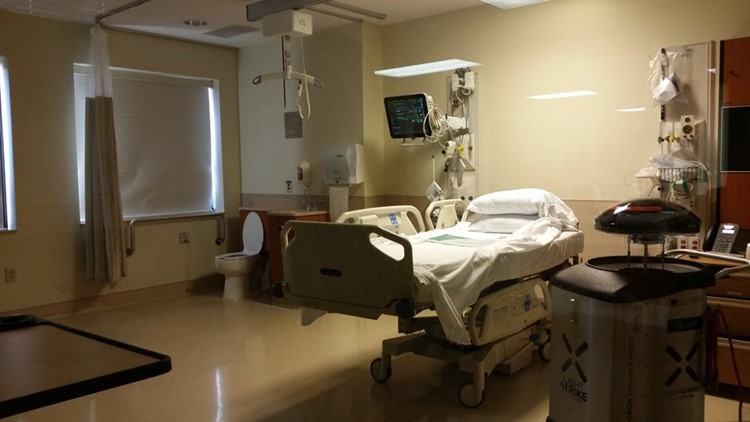CHAMBERSBURG, Pa– As a so-called “superbug fungus” spreads spores and concerns across the country, a powerful tool in Chambersburg Hospital’s cleaning arsenal could prevent its spread should a patient with the fungus arrive for treatment.
Last week, The Centers for Disease Control and Prevention sent a warning to healthcare centers about Candida Auris. The warning has created several news reports about the “superbug fungus” which now has several hundred reported cases in the United States, mostly in New York, New Jersey and Illinois.
The CDC is concerned about the spread of the fungus because it is multi-drug resistant. While treating the symptoms of the fungus continues to be a concern for clinicians, Chambersburg Hospital’s director of epidemiology and infection prevention explains the facility does have the ability to help stop its spread between rooms and equipment.
“While to date, there have not been any cases in Chambersburg Hospital or Waynesboro Hospital, we do feel reassurance that the UV-C robots, along with our cleaning protocols and procedures, position us very well to prevent this fungus from spreading between rooms.” she explained. “Patient safety is our top priority and we continue to glean the benefits of this technology. The investment continues to serve our patients and our facility and as concern surrounding this fungus mounts, we feel confident in our abilities to clean it, “said Ruth Freshman, director of epidemiology and infection prevention, Summit Health.
At Chambersburg Hospital, the Xenex LightStrike robots have been used since 2017 in the final step of the cleaning process after the environmental services staff has thoroughly cleaned a patient room.
The robots use pulsed xenon to create UV-C light, which is more intense than sunlight and can disinfect a patient room in just five to 10 minutes without chemicals.
The UV-C light from the robots cannot penetrate through glass, plastic, clothing, or the top layer of skin, yet the intense light emitted has germicidal properties and has been proven to kill germs that cause infections such as MRSA and C. difficile. C. difficile is especially difficult to remove since C. difficile spores can live on surfaces four to six months.
“By using the UV-C rays from the robots, the environmental services staff at the hospital can take that extra step by zapping away any additional organisms,” said Freshman. “They are effective in combating many drug-resistant organisms.”



